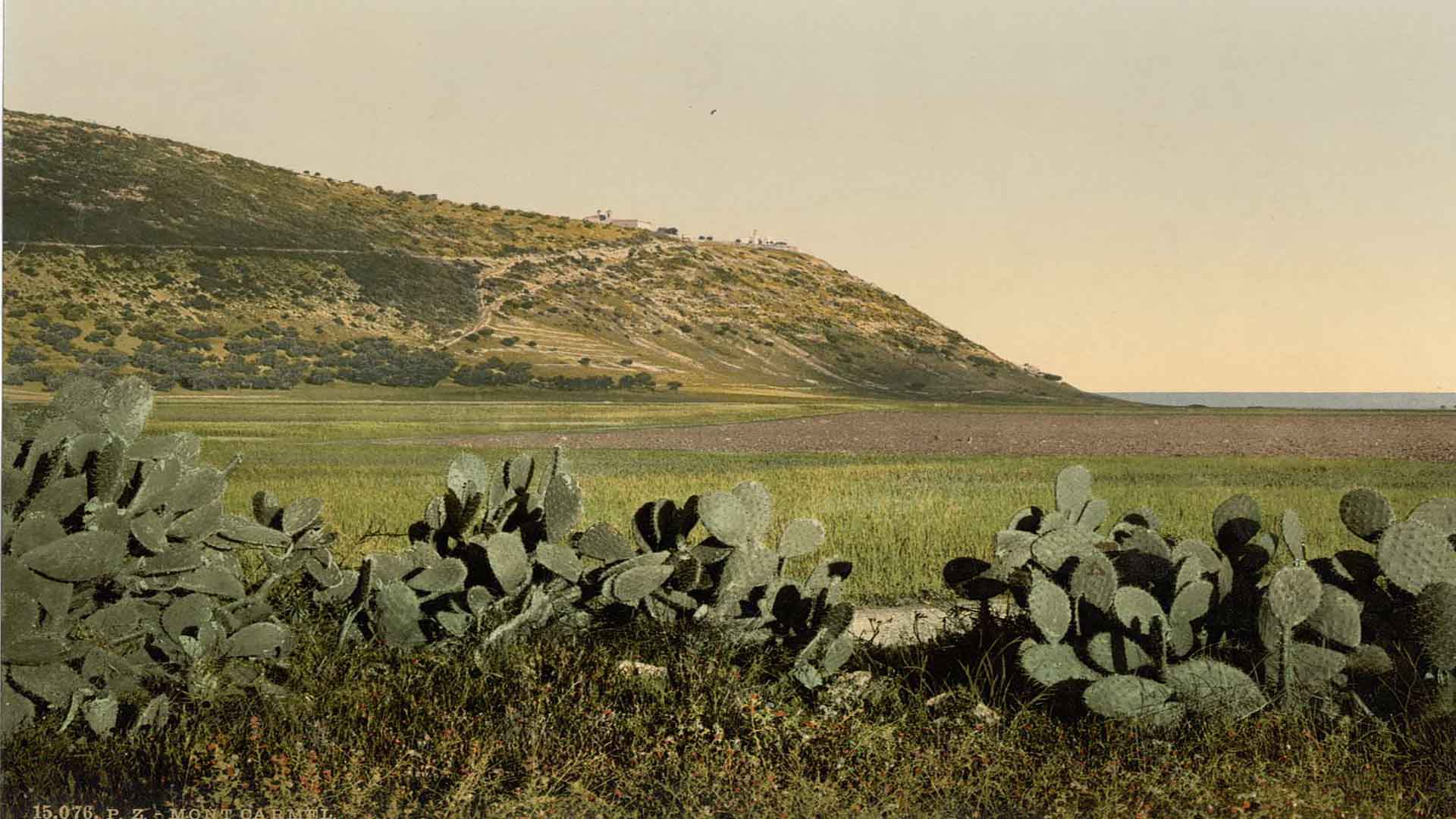The Fragrance of Carmel (3/3)
Significance of the Carmelite Way
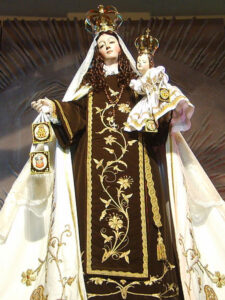 There are many Carmelite Orders, both male and female, in the Catholic Church of the Roman and Eastern Rites. The original Carmelites were an Order founded on Mount Carmel, by Berthold, a Crusader from Calabria, about the year 1155 A.D. They constitute the Order of the Brothers of Our Lady of Mount Carmel (Ordo Fratrum Beatissimæ Virginis Mariæ de Monte Carmelo, abbreviated O. Carm.) who were constrained to leave the area and settle in Europe.
There are many Carmelite Orders, both male and female, in the Catholic Church of the Roman and Eastern Rites. The original Carmelites were an Order founded on Mount Carmel, by Berthold, a Crusader from Calabria, about the year 1155 A.D. They constitute the Order of the Brothers of Our Lady of Mount Carmel (Ordo Fratrum Beatissimæ Virginis Mariæ de Monte Carmelo, abbreviated O. Carm.) who were constrained to leave the area and settle in Europe.
Thereafter, the Order underwent many reform movements, the most important one being the one initiated by Teresa of Ávila and John of the Cross. They founded the Order of Discalced Carmelites (O.C.D.), also called Barefooted Carmelites, to differentiate them from their predecessors who were ‘Calced’. There is also an Order of Cloistered Carmel nuns.
Interestingly, the Stella Maris Monastery presently on Mount Carmel in Haifa, Israel, is considered the spiritual headquarters of the Carmelite Order.
The Carmelite charism is an important jewel in the Catholic crown. Here are some reasons why:
SPIRITUALITY: Centuries of Carmelite history show that longing and living for God is the essence of their spirituality. It is clear from the numerous exemplary lives of their confreres that it is indeed possible to encounter God very intimately. This is an experience attained through simplicity, detachment, contemplation, prayer and work, all of which produces an apostolic spirit, in many ways similar to the life led by Our Lady.
MODELS: The Carmelite Order has given several saints to the Catholic Church, among them mystic authors like Teresa of Ávila (1515-82) and John of the Cross (1542-91), who shine out as Doctors of the Church. Centuries later, Thérèse of Lisieux (1873-97, also known as Teresa of the Child Jesus and the Holy Face, whose highly influential model of sanctity marked by a simple and practical approach to the spiritual life also won her the title of Doctor of the Church.
Elsewhere in the world, the richness of the Carmelite spirituality was evidenced by Kuriakose Elias Chavara (1805-71), a Syro-Malabar priest of the Carmelites of Mary Immaculate (C.M.I), from Kerala, and by Edith Stein (1891-1942), a German Jewish philosopher who converted to Christianity and became a Discalced Carmelite nun.
LITERATURE: Several Carmelites have endowed us with the fruits of their study and contemplation, the chief among them being St Teresa of Ávila and St John of the Cross. To the former belong many poetical works and spiritual classics like The Way of Perfection and The Interior Castle, besides her engrossing autobiography.
St John has to his credit poetic works like Spiritual Canticle and Dark Night of the Soul, and prose works like The Ascent of Mount Carmel, among others.
Thérèse of Lisieux’s autobiography, The Story of a Soul, was published posthumously.
In the monastery where she lived, Edith Stein was assigned the task of completing her autobiography, Life in a Jewish Family. She also wrote Finite and Eternal Being – An Ascent to the Meaning of Being and Science of the Cross, commenting on St John of the Cross and the Carmelite understanding of the depths of the soul.
MESSAGE TO THE WORLD: At the Apparitions in Fátima, whose full import the world is yet to understand, Our Lady of Mount Carmel appeared to Sister Lúcia holding the Brown Scapular. The famous visionary, who later became a Carmelite nun, stated that our Divine Mother wished everyone would wear it as a sign of their ‘consecration to her Immaculate Heart.’ For sure, the sacramental is a quiet and comforting reminder that Our Lady is always there for us.
There is therefore no doubt that we are in the presence of a prophetic Religious Order: The Carmelites!
The Fragrance of Carmel (2/3)
The Call of Mount Carmel
The Carmelite Order traces its origins to hermits who lived on Mount Carmel in Palestine, near the traditional site associated with the prophet Elijah, in the 12th century. These hermits, inspired by the example of Elijah and Elisha and their devotion to prayer and contemplation, later formed the Carmelite Order. On Mount Carmel they erected a sanctuary to the Virgin Mary, at the same place where Elijah had seen the Cloud. They called themselves Brothers of the Blessed Mary of the Mount Carmel. They regarded Elijah as their spiritual founder.
Soon, many pilgrims began to join the Order, among them St Cyril (c. 1126 - c. 1235), St Angelo (1185-1220) and St Simon Stock (c. 1165-1265). St Cyril, often referred to as Cyril of Constantinople, was a priest and a legendary figure in the Carmelite order. St. Angelo, also known as Angelus of Jerusalem, was a convert from Judaism who became a Carmelite priest and was martyred.
In the twelfth century there were many misunderstandings against the Hermits of Mount Carmel, particularly when they transitioned from their eremitical life on Mount Carmel to Europe. These challenges stemmed from adapting to new settlements, being present alongside other mendicant orders, and a lack of understanding about their specific way of life.
St Simon Stock
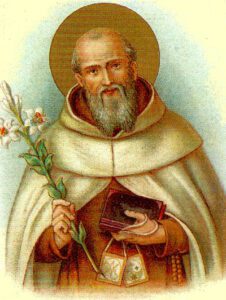 Meanwhile,, Simon Stock, an English Carmelite, suffered a lot in view of the opposition that his Order suffered in his country. On the night of 16 July 1251, at the height of his suffering, St Simon was praying hard to Our Lady; his fervent prayer was transformed into a marvellous hymn:
Meanwhile,, Simon Stock, an English Carmelite, suffered a lot in view of the opposition that his Order suffered in his country. On the night of 16 July 1251, at the height of his suffering, St Simon was praying hard to Our Lady; his fervent prayer was transformed into a marvellous hymn:
Flower of Carmel,
Tall vine blossom laden;
Splendour of heaven,
Childbearing yet maiden.
None equals thee.
Mother so tender,
Who no man didst know,
On Carmel's children
Thy favours bestow.
Star of the Sea.
Strong stem of Jesse,
Who bore one bright flower,
Be ever near us
And guard us each hour,
who serve thee here.
Purest of lilies,
That flowers among thorns,
Bring help to the true heart
That in weakness turns
and trusts in thee.
Strongest of armour,
We trust in thy might:
Under thy mantle,
Hard press'd in the fight,
we call to thee.
Our way uncertain,
Surrounded by foes,
Unfailing counsel
You give to those
who turn to thee.
O gentle Mother
Who in Carmel reigns,
Share with your servants
That gladness you gained
and now enjoy.
Hail, Gate of Heaven,
With glory now crowned,
Bring us to safety
Where thy Son is found,
true joy to see.
Amen. (Alleluia)
The Saint prayed and sang all night. At the first sign of dawn, Our Lady appeared to him, surrounded by the angels, dressed in the habit of the Carmel. She smiled and brought in her virginal hands the Scapular of the Order, with which she clothed the man of God, saying: ‘This is a privilege for you and all the Carmelites. Whoever dies wearing this scapular shall not fall into hell.’
Of course, we cannot be carried away by the false idea that the mere wearing of a scapular is sufficient to win us Heaven. A scapular is not an amulet but a sacramental, a reminder of Our Lady's protection and intercession. So, we must have devotion to her and live a Christian life fulfilling the Commandments!
Saturday Privilege
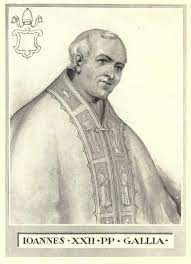 In 1316, it is said that the Virgin appeared to a cardinal who, on the second day of the vision, was elected Pope bearing the name John XXII, who reigned up to 1334. She spoke to him of a Sabbatine or ‘privilege John XXII’, which was approved and confirmed by Pope Clement VII ("Ex clementi", 12/8/1530), Pope St Pius V ("Superna dispositione", 18/2/1566), Pope Gregory XIII ("Ut laudes", 18/9/1577), and others, and also by the Holy Roman General Inquisition under Pope Paul V (20/1/1613).
In 1316, it is said that the Virgin appeared to a cardinal who, on the second day of the vision, was elected Pope bearing the name John XXII, who reigned up to 1334. She spoke to him of a Sabbatine or ‘privilege John XXII’, which was approved and confirmed by Pope Clement VII ("Ex clementi", 12/8/1530), Pope St Pius V ("Superna dispositione", 18/2/1566), Pope Gregory XIII ("Ut laudes", 18/9/1577), and others, and also by the Holy Roman General Inquisition under Pope Paul V (20/1/1613).
Accordingly, ‘it is permitted to the Carmelite Fathers to preach that the Christian people may piously believe in the help which the souls of brothers and members, who have departed this life in charity, have worn in life the scapular, have ever observed chastity [according to one’s state], have recited the Little Hours [of the Blessed Virgin], or, if they cannot read, have observed the fast days of the Church, and have abstained from flesh meat on Wednesdays and Saturdays (except when Christmas falls on such days), may derive after death — especially on Saturdays, the day consecrated by the Church to the Blessed Virgin — through the unceasing intercession of Mary, her pious petitions, her merits, and her special protection.’ (Cf. summary approved by the Congregation of Indulgences on 4 July 1908).
(Talk delivered at Regina Angelorum Cultural Centre, Panjim)
To be concluded: 3 - Significance of the devotion for our day and age
The Fragrance of Carmel (1/3)
Carmel is a mount that figures in the Old Testament. Devotion to Our Lady began there, indirectly, with Prophet Elijah (also called Elias); it culminated in the formation of the Religious Order of the Carmelites in the thirteenth century. It is a fragrance we still enjoy!
In 1 Kings 19: 16B, 19-21, we meet Elijah, a prophet who lived in Israel nine centuries before Christ. He proclaimed Yahweh, the one true God of the Israelites, against Baal, a false god of the Canaanites. God worked miracles through Elijah as a sign that he was His favoured one. Because of the sins committed in Israel, the Prophet appeared before the evil king Acab and announced a terrible chastisement. There followed a drought throughout the kingdom.
First resurrection
Elijah withdrew to Sarepta and was helped by a poor and honest widow. She had only flour and oil for herself and her son to consume, after which they expected to die. But she counted the Prophet in and the reward was that flour and oil miraculously increased in the containers. This is a lesson in heroic faith and confidence that we must have in God.
But then, the son died and, all agonised, the woman said to the Prophet: ‘What did I do, oh man of God? Did you come to my house to remind me of my sins and kill my son?’ Elijah called out to God and the Lord heard his prayer. Soon, ‘the little boy’s soul returned to him and he won back his life.’ This was the first miracle of resurrection we see in the Old Testament.
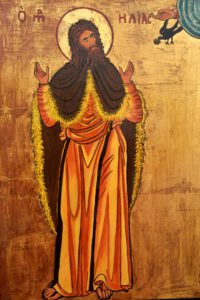 Combative spirit
Combative spirit
After three years in which the kingdom was without dew or rain, Elijah was before the king again. The king asked him: ‘Are you the troublemaker in Israel?’ In a typical example of holy daring or courage, Elijah answered: ‘It is not I who disturbed Israel but you and the house of your father, by abandoning the Lord’s commandments and following Baal.’ Then, turning to the people, he said: ‘When are you going to stop making the mistake of turning to the Lord and to the idol of Baal all at once?’ If the Lord is God, follow him; if Baal is it, follow him.’ (Cf. 1 Kings 18)
Elijah challenged the prophets of Baal to work a miracle. They failed. The people were dumbstruck. Elijah then worked a prodigious miracle on Mount Carmel, bringing fire from heaven for the holocaust, and wood and stones to erect the altar. And the 450 false prophets of Baal, the main responsible for the people’s sins, ‘and Elijah brought them down to the brook Kishon and killed them there’ (1 Kings: 18: 40). This is an example of combativeness for God, a trait lacking in modern man.
Prefiguring the Immaculate Conception
After this healthy and admirable eradication, Elijah began to pray on the Mount. After he implored God to stop the terrible drought, a little cloud began rising from the sea, which soon caused a great shower to fall (1 Kings: 18: 44). This little cloud is interpreted as the symbol of Our Lady and Her Immaculate Conception – because, just as the light and winged cloud rose from the salty sea, without a trace of its bitterness, the Virgin Mary emerged faultless and immaculate from the sea of fallen humanity. Elijah understood this symbolism and was the first to venerate Our Lady.
Elijah’s was snatched from this earth by a chariot of fire. Before that he threw his mantle upon Elisha, who then lived on Mount Carmel. Centuries later, Elijah appeared at the Transfiguration of Our Lord on Mount Tabor and it is believed that he (together with Enoch) will return at the end of the world, to combat the Anti-Christ.
(Talk at Regina Angelorum Cultural Centre, Panjim)
(To be continued: 2 – St Simon Stock and the Carmelites. 3 – Significance for our day and age)
